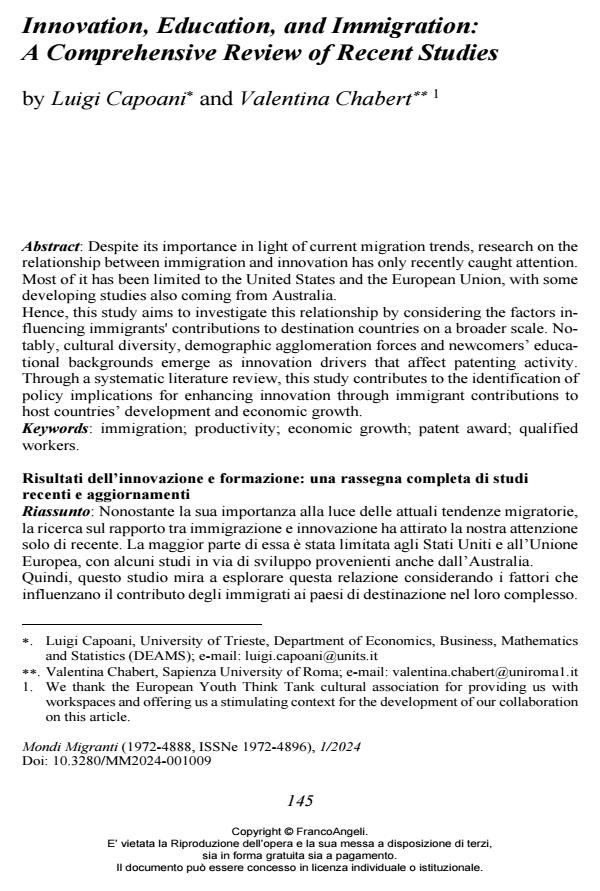Innovation, Education, and Immigration: A Comprehensive Review of Recent Studies
Titolo Rivista MONDI MIGRANTI
Autori/Curatori Luigi Capoani, Valentina Chabert
Anno di pubblicazione 2024 Fascicolo 2024/1
Lingua Italiano Numero pagine 32 P. 145-176 Dimensione file 311 KB
DOI 10.3280/MM2024-001009
Il DOI è il codice a barre della proprietà intellettuale: per saperne di più
clicca qui
Qui sotto puoi vedere in anteprima la prima pagina di questo articolo.
Se questo articolo ti interessa, lo puoi acquistare (e scaricare in formato pdf) seguendo le facili indicazioni per acquistare il download credit. Acquista Download Credits per scaricare questo Articolo in formato PDF

FrancoAngeli è membro della Publishers International Linking Association, Inc (PILA)associazione indipendente e non profit per facilitare (attraverso i servizi tecnologici implementati da CrossRef.org) l’accesso degli studiosi ai contenuti digitali nelle pubblicazioni professionali e scientifiche
Despite its importance in light of current migration trends, research on the relation-ship between immigration and innovation has only recently caught attention. Most of it has been limited to the United States and the European Union, with some developing studies also coming from Australia. Hence, this study aims to investigate this relationship by considering the factors influencing immigrants' contributions to destination countries on a broader scale. Notably, cultural diversity, demographic agglomeration forces and newcomers’ educational backgrounds emerge as innovation drivers that affect patenting activity. Through a systematic literature review, this study contributes to the identification of policy implications for enhancing innovation through immigrant contribu-tions to host countries’ development and economic growth.
Parole chiave:immigration; productivity; economic growth; patent award; qualified workers.
Luigi Capoani, Valentina Chabert, Innovation, Education, and Immigration: A Comprehensive Review of Recent Studies in "MONDI MIGRANTI" 1/2024, pp 145-176, DOI: 10.3280/MM2024-001009